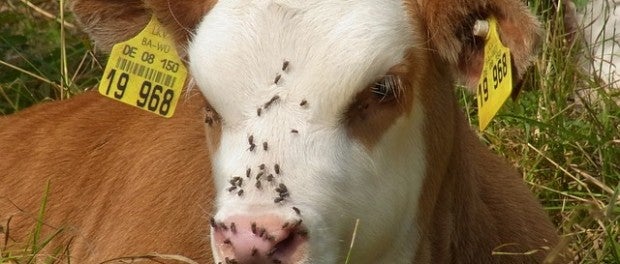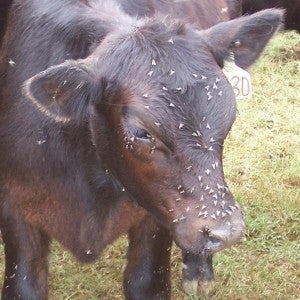Fly Control on the Farm

One of the biggest nuisances on a farm is the presence of flies. They harass the poultry. They harass the livestock. They even harass us humans as we attempt to get work done. Keeping them at bay can be difficult and coping with their presence frustrating. As the weather warms up, the flies become more and more plentiful and in much of the country farmers are already at wit’s end trying to cope with that which bugs them.
Fly control is big business, fed by anyone who works on a farm or spends time outdoors. There are a plethora of products on the market that claim to solve the problem, but which option is best for you? With so many to choose from that vary in cost from modest, recurring price to a big investment, it can be tough to settle on the option that suits you best. Despite the difficult choice, something is going to have to be done about flies otherwise you face a general decrease in health of farm animals as well as a more likely spread of disease in addition to wounds that don’t heal. In order to stop this, you have to stop the flies. Here are some fly control options:
Do away with manure as it draws flies and is essentially a home base where they thrive. It is in the manure pile that they breed, so doing away with the manure helps to do away with the flies. This may sound easier said than done, but manure can be sold to gardeners or spread on fields as fertilizer. Regardless of the method you choose to dispose of manure, it is important that something is done to keep manure at a minimum.
Since manure is vital to the life cycle of the fly, hit them where it hurts. Should you find yourself unable to get rid of manure quickly enough to impeded fly reproduction, go straight to the source to stop flies by making the manure pile inhospitable. This can be done through the use of fly predators which live in or near manure and destroy future fly generations before they mature. Though ineffective against adult flies, fly predators will stop them from breeding by doing away with their young. Fly predators do have to be replenished on a monthly basis during fly season and the number ordered must correspond with the number of livestock animals you have as well as those in general area, which makes them a possibly expensive venture depending on the size of your operation.
Some farmers embrace a feed through technique that works one of two ways. The first way is to use a product that contains cyromazine that when consumed and digested results in manure inhospitable to flies. Since this often comes in an appetizing form, such as in molasses, its consumption must be monitored in order to keep animals from gaining excess weight or foundering. The second way is to add apple cider vinegar to drinking water or feed sources. This is thought to make the animal smell unappetizing to the fly, resulting in reduced bites. Suggested amounts vary from 1 cup to 50 gallons on up to 1 cup for every 6 gallons so some experimentation may be necessary. Not all animals will drink this mixture so it is important to monitor water intake to ensure animals are drinking enough.
Last but not least are the traditional standbys. These include sticky traps, fly paper, baited traps, spray repellents and the like. Though many of these have advantages, there are also disadvantages as well. Fly traps that claim to be innovative and cutting edge are often expensive to purchase and ship and not reusable. Fly paper and sticky traps can quickly become ineffective in dusty, humid areas and must be placed out of reach of animals. Spray repellants are great, but also temporary and need to be reapplied. Spot treatments such as Spot On Insecticide for cattle and sheep may be a better bet, promising extended results.
Despite the many fly control options available for your farm, you could always give one old fashioned method a chance. Strange and unlikely as it sounds, suspending a Ziploc bag half full of water with a penny inside from barn rafters is a surprisingly effective tool in the war against flies. The jury is out as to why this works, but the most commonly seen argument is because the bags create light refraction which is confusing to the eye of the fly, sending it elsewhere. Whatever the reason for the success of this method may be, it is cheap and easy to use in barns, but the problem of pasture fly control in wide open spaces still remains.
Regardless of the method of fly control you choose, the bottom line is that you have to do something. You may even have to do everything, combining various techniques to keep animals as well as yourself at the hands of biting flies. Though the choice as to what to use will depend largely on the size of your farm and the climate in which you live, one can only hope for a fly season that is swift, bearable, and inexpensive.






 Your Privacy Choices
Your Privacy Choices
Think of this tag as an advert or call tto action, much as with PPC
(the pazid for listing above and to the right in SERPs). Therre are other user signals that modify positioning.
However, when associated with online marketing, multivariate testing is defined as a process in which more than a single part of a site or page is tested within a
live setting.